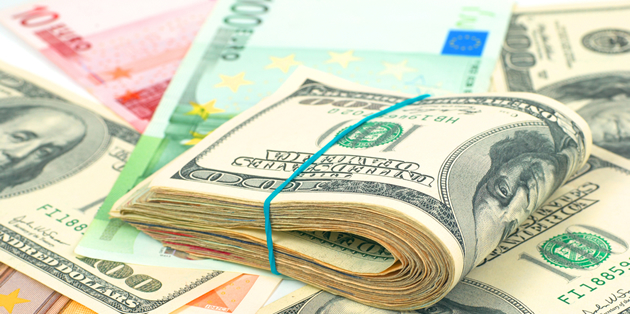- Lack of Fed rate hike failed to dent US Dollar – Safe-haven demand boosted by dovish commentary
- Lloyds Bank forecast Fed tightening in September – ‘Greenback’ likely to remain on bullish form
- Positive Eurozone CPI not enough to encourage Euro demand – Single currency exposed to Brexit risk factor
- Weaker US housing data predicted to boost EUR/USD exchange rate – Economic weakness to end US Dollar bull run
Euro (EUR) Trends Lower Today in spite of Greek Bailout News
Despite Greece’s latest tranche of bailout funds having finally been approved by its Eurozone creditors sentiment towards the Euro (EUR) remained muted on Friday morning. As a result the Euro to US Dollar (EUR/USD) exchange rate continued to trend lower in the region of 1.1262.
(Previously updated at 06:00 on 17/06/2016)
The Federal Reserve policy meeting prompted particular volatility for the Euro to US Dollar (EUR/USD) exchange rate on Thursday.
US Dollar (USD) Entered Bullish Run Despite Lack of Fed Rate Hike
Although the Federal Open Market Committee (FOMC) conformed to market expectations and did not opt to raise interest rates at its June meeting investors were still surprised by the more dovish tone of policymakers. As the Fed lowered its growth forecasts and indicated concern over the increasing negative global headwinds it perceives the US Dollar (USD) received a strong boost from the resultant increase in safe-haven demand. Even if the chances of the Fed hiking rates in the near future seemed to be diminished this saw the ‘Greenback’ pushed higher by investor risk aversion.
Analysts from Lloyds Bank, meanwhile, remained confident that the Fed could still resume its monetary tightening cycle before the end of the year, noting:
‘If, as we forecast, US employment growth picks up again in June and other economic data improves over the next couple of months, we expect a 0.25% rate rise in September and a similar move late in the year. However, as today’s key message is that, while the FOMC expects to raise interest rates, they are in no hurry to do so there is clearly a risk that these interest rate moves will take longer to occur.’
Brexit Risk Limited Appeal of Euro (EUR) Exchange Rate
While the Euro (EUR) did benefit from some of the market bearishness triggered by the Fed’s meeting this strength was naturally muted against the US Dollar. The single currency was offered some support by an unexpected upward revision in May’s finalised Eurozone Consumer Price Index report. Even though inflation was confirmed to have remained negative on the year investors were encouraged to see that the monthly measure had been pushed up from 0.3% to 0.4%. This would seem to suggest that the European Central Bank’s (ECB) monetary easing measures have been having a tangible positive impact on domestic conditions, although doubts nevertheless remain over the effectiveness of the central bank’s policy.
Confidence in the single currency was also limited by its close connection to the Brexit risk, as a vote for the UK to leave the EU would likely have a negative impact on the outlook of the Eurozone. As a result, with opinion polls pointing towards sustained support for the ‘Leave’ campaign the Euro to US Dollar (EUR/USD) exchange rate slumped sharply to a fortnightly low of 1.1132.
EUR/USD Exchange Rate Forecast: Disappointing US Housing Data Could Prompt ‘Greenback’ Weakness
Comments from ECB President Mario Draghi are unlikely to particularly dent the appeal of the Euro ahead of the weekend, although the policymaker is expected to maintain a relatively dovish tone with regards to monetary policy. As markets remain sceptical of the ECB’s ability to stimulate the domestic economy the single currency could return to a stronger footing.
The bullishness of the ‘Greenback’ may continue in earnest, however, as safe-haven demand is likely to remain strengthened by persistent market uncertainty. Weaker US Housing Starts and Building Permits figures could undermine the bullishness of the US Dollar, though, if the world’s largest economy show further signs of slowing.



